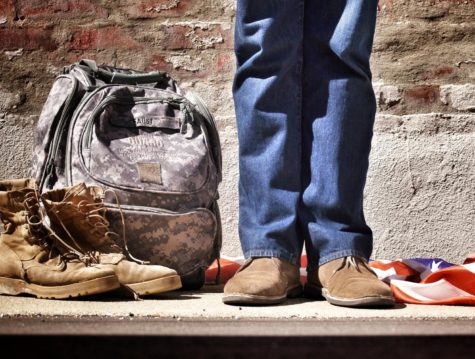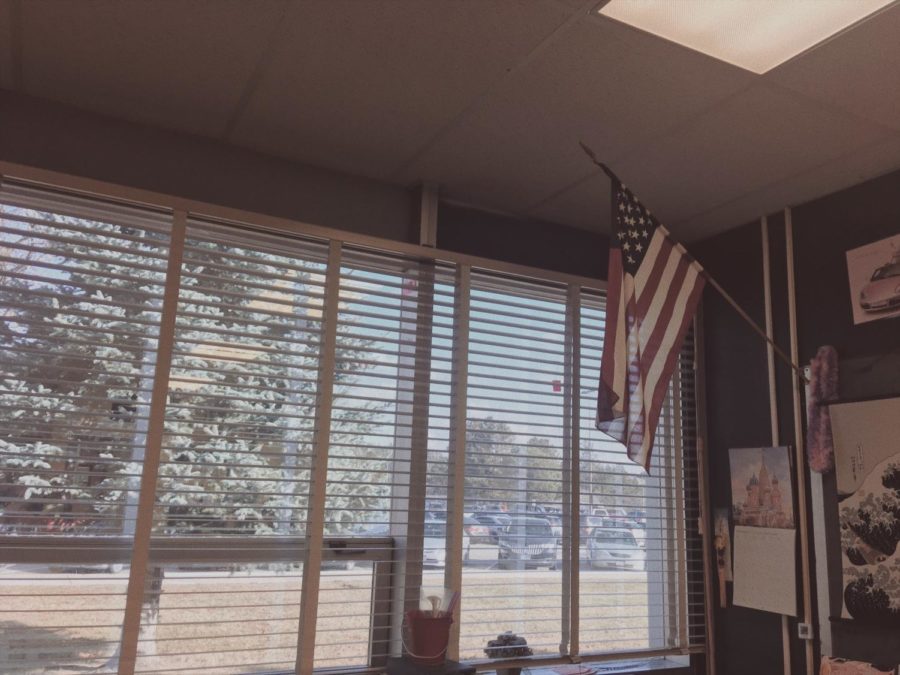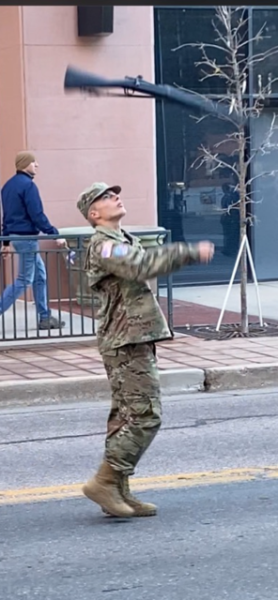Should Students Stand for the Stars and Stripes?
Within American schools, students and administrators are given the chance to stand and recite the nation’s pledge of allegiance during the morning flag salute every day.
Historically, people would stand, respectfully placing their hands over their hearts and declaim their fealty to the symbol of the United States of America.
Recently, however, it’s not uncommon to see people sitting or kneeling in protest of what they see as injustices inherent in the country. At Air Academy High School, these differing responses to the pledge occur simultaneously.
Either way, every person is entitled to their own opinion and has the freedom to choose if they wish to sit or stand.
SmithsonianMag stated that in 1942, Congress recognized the pledge of allegiance, which was written by Francis Bellamy 50 years prior. The pledge became part of a national flag code has been recited in public schools since then.
Controversy followed this decision, as forcing students to recite the pledge seemed unconstitutional to some, including Jehovah’s Witnesses. The case was then brought to the Supreme Court.
According to Oyez, on June 14, 1943, the Supreme Court ruled on the West Virginia Board of Education v. Barnette case. It was decided that forcing people to recite the pledge was, in fact, unconstitutional (1A).
Although whether people should recite the pledge or not was addressed by this case and several that followed after this, standing for the pledge was not.
FindLaw indicates that standing or not standing for the pledge cannot be punished in the public school system since students and teachers have the right to protest under the First Amendment. Although this may be true, is protest really the reason people are sitting, or is it just an act of pure disrespect? This is where ethics come into play.

Woman holding the American flag in the street. Labeled for reuse on Unsplash.
This brings forward a controversial question:
Should students stand for the pledge?
For freshman Logan Fairhurst, the question has a simple answer.
“People should stand for the pledge because doing so shows that they’re representing their country as well as the people who have died for the country,” he said. “[People] are respecting the men and women who have fought for the freedom of the country [by standing].”
Sophomore Crystal Camacho Agosto, who transferred to AAHS this year from Puerto Rico agreed with Fairhurst, stating, “I do believe [that people should stand for the pledge] because it’s important that students learn to be patriotic towards the country and its soldiers.”
Agosto, who lived in Puerto Rico (PR) for her entire life until she moved to Colorado, expressed that students in PR (which is an American territory) are also expected to stand for the pledge.
Sophomore Katy Reich also gave her opinion.
“People should stand for the pledge because it’s a sign of respect for our country and the people who fought for our freedom,” she said. “If [people] choose to sit, then I think [they’re] being really disrespectful.”
Freshman Angelus Jones gave an opinion as well, stating, “Students should stand for the flag because doing so is a sign of freedom. There’s years and years of sacrifice put into creating the flag’s legacy, and doing anything other than standing and putting your hand over your heart is extremely disrespectful.”
Fairhurst, Agosto, Reich and Jones all shared the same belief that students should stand for the pledge. However, senior Anelise Alvis gave an opposing view.
“Personally, I don’t think it matters all that much if students stand or don’t stand for the pledge. Their action (or inaction) isn’t hurting anybody and isn’t distracting. Legally, requiring students to stand for the pledge, salute the flag, etc., has been considered unconstitutional since 1943. The court decided that ‘no official, high or petty, can prescribe what shall be orthodox in politics, nationalism, religion, or other matters of opinion or force citizens to confess by word or act their faith therein.'”
When asked if students who don’t stand have justified reasoning, Alvis responded, “To put it simply, yes. In my eyes, it doesn’t matter if an individual chooses not to stand for the pledge for religious reasons, political reasons, or just because they don’t want to,” she said. “It is one of the rights granted to all of us under the Constitution.
Students may choose to sit for a variety of reasons. The New York Times interviewed several students in 2017, including Emma Cowan, who no longer stands for the pledge. Cowan outlined that not standing is “her own silent protest” against tensions involving police and African-Americans. She also discussed that she’s never been affiliated with any religious groups, and doesn’t feel as though the “under God” line of the pledge represents her.
People may also sit simply because they’re in disagreement with the government’s policies or who’s in office, which occurred frequently after the 2016 election between Republican Donald Trump and Democrat Hillary Clinton.

Man standing with his military gear. Labeled for reuse on Unsplash.
Caroline Slack, who was also interviewed by the NYT, protests in a different way.
“I stand because I have family in the military, and I have a lot of reasons why I would stand for the flag. But, I don’t put my hand over my heart because while I do stand for the United States, I know that there are issues that need to be addressed.”
Another form of protest is kneeling. NFL player Colin Kaepernick protested against the oppression of black people by kneeling during the national anthem, stated The Undefeated. Kaepernick received backlash for doing this and dented his career as a distinguished football player.
To quote Alvis again, “I find the way people react to those who don’t stand for the pledge or national anthem very interesting. I think many people who sit or kneel use it as a means to call attention to certain issues within our country, and as it turns out, this perfectly legal action has been an extremely effective means of catching people’s attention and causing somewhat of an uproar.”
Regardless of beliefs, standing for the pledge has been a controversial issue for decades. Whether students wish to stand or sit is up to them; it’s their right to choose how or even if they will respect the flag and the pledge.

Hello there! My name is Leilani and I'm a Copy Editor for the Jetsream, and a senior at AAHS. I'm currently part of the Orchestra playing violin, and the...














Katy Reich • Nov 17, 2018 at 7:39 pm
You rock!